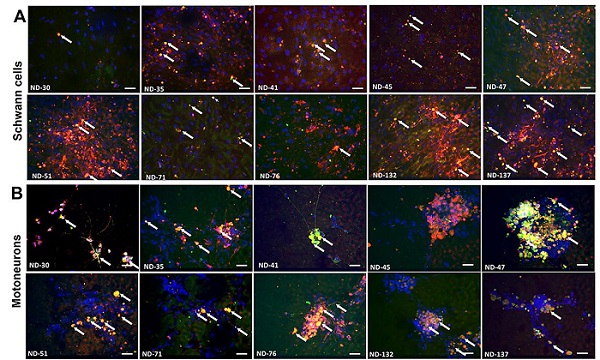April 25, 2022 -- Researchers at the U.S. National Institutes of Health (NIH) have bioengineered a "tissue chip" to show how a drug could potentially treat chronic inflammatory demyelinating polyneuropathy and multifocal motor neuropathy. That data has been used by a Florida company to submit a U.S. Food and Drug Administration (FDA) investigational new drug application.
Orlando-based Hesperos led the tissue chip research, which consisted of two cell types: motoneurons and Schwann cells. Motoneurons transmit messages from the brain to muscles whereas Schwann cells help the signals move faster.
The bioengineered 3D model Hesperos developed could mimic functional characteristics of the diseases and allows scientists to determine whether the brain's messages to muscles are slowing down or not.

Exposing the cells to blood serum from people with chronic inflammatory demyelinating polyneuropathy and multifocal motor neuropathy caused a shower of immune system antibodies against the cells. The motoneuron signals moved more slowly, but after treatment with TNT005, a drug that blocks the immune system reaction, the cells and the message speed returned to normal, the researchers found.
Hesperos' study could lead to new therapies for other rare diseases by establishing a new avenue for repurposing existing drugs for rare diseases, which is an "important milestone," according to the NIH's National Center for Advancing Translational Sciences (NCATS).
The tissue chip research was funded by True North Therapeutics (now Sanofi), NCATS, and internal Hesperos development funds.
Copyright © 2022 scienceboard.net






